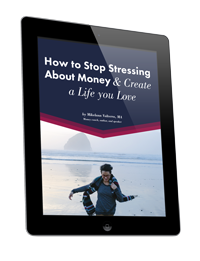A while ago a colleague sent me a great link to Robert Middleton’s More Clients Blog, with a great piece on Knowing Your Value (5.22.06). I just found it (yes, I got behind when I bought my new computer…) and wanted to pass it on. It’s so true:
Most professionals don’t feel they are being paid what they’re worth, and Robert says that this is part of their scarcity mindset.
For most people, their “wealth thermostat” is set to the amount of money they are comfortable earning. If you can’t see yourself earning $100,000, for example, then as much as you may want to earn that, you won’t do what you need to do to cross that threshold, including charging your clients enough money.
(This is where our money messages come in—“Just who do I think I am to make that much money”, “It would be greedy to ask that much”, “Good people don’t make a lot of money”….)
We are often unconscious about where our thermostat is set, but we always end up in the same range, financially. Look at your social security statement of earnings to get a sense of your thermostat.
Middleton lists a wonderful five step process to help you change your mindset about the value of your services. Check it out!
